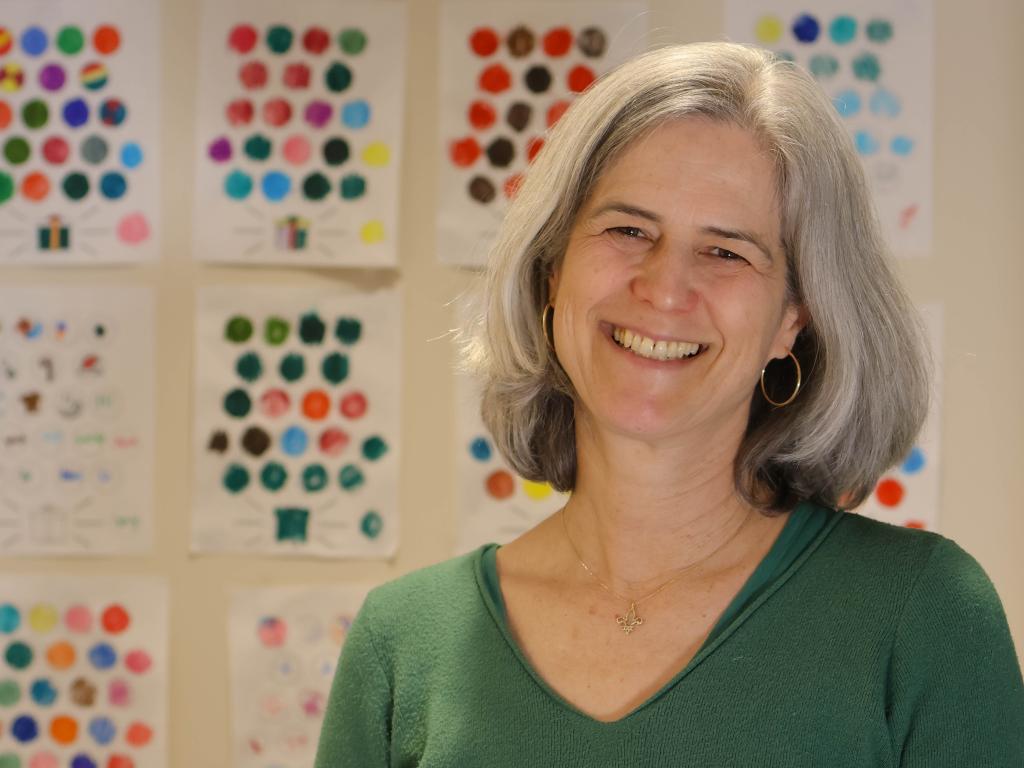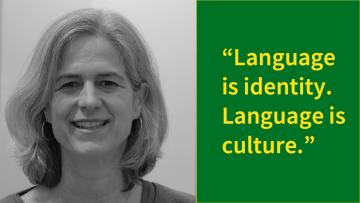
Editor's note: This article was produced by a student participating in the course J477/577: Strategic Science Communication, a collaboration between the School of Journalism and Communication's Science Communication Minor program and the Research Communications unit in the Office of the Vice President for Research and Innovation.
Breathing is a fundamental biological process often taken for granted, but it plays an important role in the speech development of children.
Melissa Redford, professor in the Department of Linguistics, along with Associate Professor of Linguistics Kris Kyle, are working to build a speech corpus called Phrasing, Inhalation and Language Structure (the PILS Project) to discover how children learn to coordinate their breath with language when speaking by first comparing child and adult speech breathing patterns.
"Nobody is asking this question," Redford said. "Kids just don't breathe the same way adults do when speaking and frequently breathe in the middle of their sentences."
Speech is produced on the outflow of breath, a process that expels carbon dioxide from the respiratory system like a deflating balloon. When speaking, people use their breath to create speech sound. When they breathe in, they segment their speech into phrases.
"People understand speech better when natural breathing sounds and pauses are incorporated," Redford said. For example, it can be challenging to comprehend a sentence from an out-of-breath runner gasping for air because the flow of their language is interrupted with abnormal pauses and stretched-out sounds.
The relationship between breath and human connection

The speech corpus Redford and Kyle are working on is a collection of child and adult speech audio files and transcribed texts that will be made available to researchers to study language empirically. The database is like a giant library that contains large volumes of information. Computational tools, including the tools of artificial intelligence, are used to investigate the library and learn its patterns.
"Current corpuses don't have information on where the silent pauses and the breaths within those pauses occur in language," Redford said. "So, this project can be used to improve speech synthesis."
When breathing is not coordinated with language, we hear awkward breaks or pauses in one's sentences. The lack of coordination may also underpin other types of disinfluences—involuntary interruptions in speech—characterized by the repetition of singular words or syllables and the prolonging of certain sounds.
"How you speak and how you express yourself has consequences for your health," Redford said. "If you have an atypical development, and you speak differently, this then impacts your socialization, which then impacts your quality of life."
The COVID-19 pandemic has been associated with a rise in developmental delays that might have otherwise been caught earlier and treated in schools, including atypical speech, contributing to more established speech sound disorders in children now than before. Also, learning a spoken language is a socio-cultural phenomenon that depends on the availability of people in one's immediate environment. As a result of facial masks and decreased socialization, young children received less visual input from others when speaking during early development with consequences for speech.
For instance, "We learn where to place the tongue when speaking consonants by watching people's mouths," Redford said. "If you don't see the mouth, you don't learn that distinction very easily."
When one's communication is atypical, that individual may be isolated. According to Redford, one of the most significant ways to improve this is to ensure that children can communicate in a way that provides them with access to positive social interactions.
"Language is fundamental to what it means to be and feel human." — Melissa Redford
And breathing is fundamental to language. In normal adult speech, breaths tend to occur at the beginning of a thought. People's attention and retention are often better when they hear a breath before a sentence, indicating something of significance is about to be spoken.
"The breath is kind of like a signal that the listener can use to anticipate what's coming up," Redford said.
The PILS project is in its first year of research out of three. The study examines thirty 5-year-olds, and thirty adult participants.
One of the assessments the researchers use to collect data for the speech corpus is to test the participants' breathing patterns with a spirometer. A spirometer tracks the volume and speed of the participants' inhalation and exhalation. The test provides the researchers with numerical data on the capacity of the participant's lungs to determine if there are abnormalities in their breathing later in the study. The visual graphics produced from this test create a shape resembling a wave that rises and falls as the participant breathes in and out.
While still in the early stages of building the corpus, Redford and her collaborators are optimistic that their work will be an educational tool for understanding how spoken language is learned and coordinated with the motor system and how this coordination impacts and is impacted by the culture of language.
